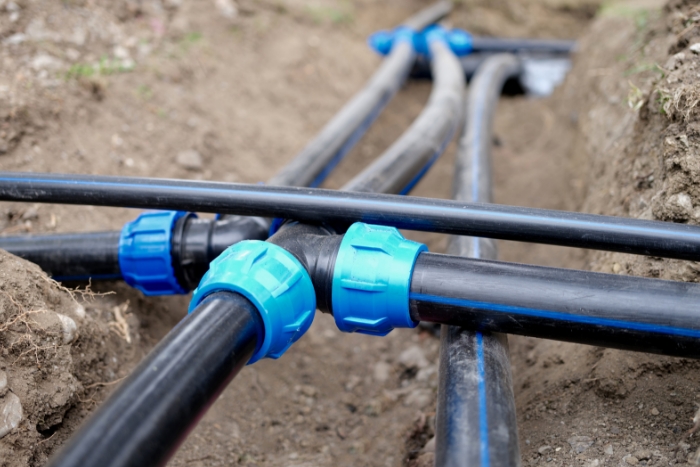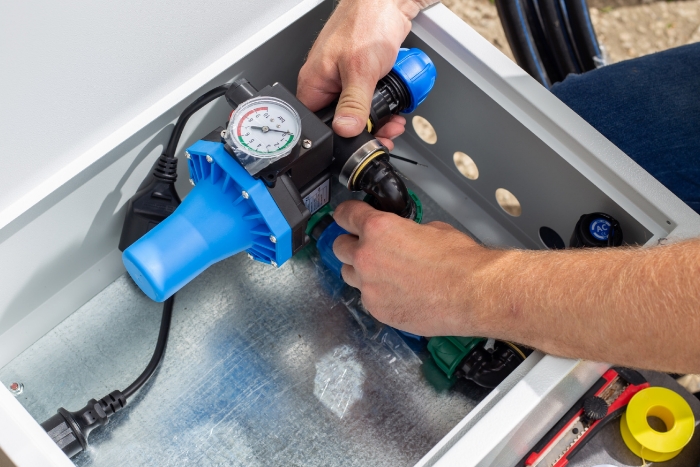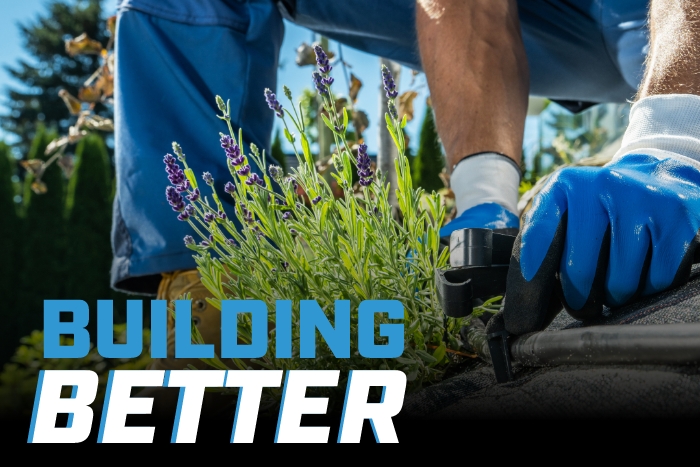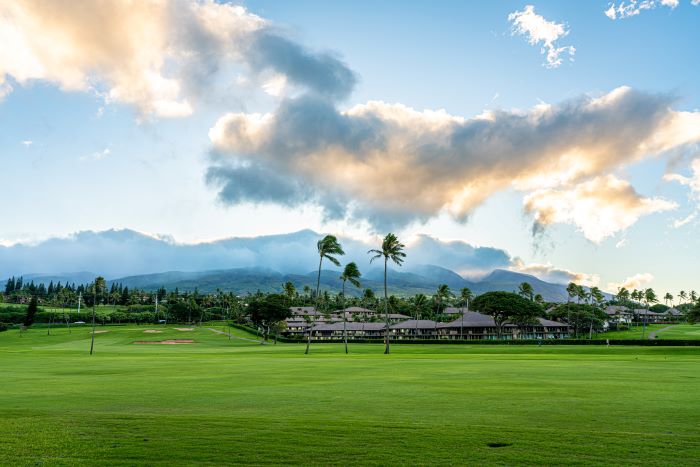Tight margins, short installation seasons and trouble finding experienced labor make it challenging to install irrigation systems perfectly every time. However, following design and installation best practices helps ensure that every irrigation system — whether it’s residential or commercial — delivers on customer expectations, maximizes water use efficiency and drives contractor profitability.
Best practices begin with thoughtful design planning, encompassing site usage, water and pressure availability, and meticulous attention to detail, such as using appropriate materials and adhering to a well-designed approach. Even cutting corners on seemingly small aspects of a project can result in wasted water, stressed plants, extra maintenance or even early system failure.
Making best practices part of design and installation standard practice on every job ensures that customers are satisfied with optimally performing systems, which in turn builds a reputation that wins repeat business. Here, you’ll find four frequently skipped best practices that are simple to incorporate to reduce callbacks and increase client satisfaction.
1. Stick to the specs
Following specified plans might feel rigid, but there’s usually sound reasoning behind design decisions. While field experience can identify potential improvements, making executive decisions without consultation can be costly.
“We’re working on one project right now where we designed it to be spray heads and the contractor has changed it all to drip, which on the face, you would think, is fine,” says Brian Vinchesi, CGIA, CIC, CID, CLIA, CLIM, CLWM, president of the Massachusetts-based firm Irrigation Consulting. “The problem is, it’s a public housing facility, and the drip won’t last a year because the kids will destroy it in a public housing facility; you have to do the same thing with schools.”
Managing product costs is good business. However, installing cheaper alternatives can be more costly in the long run. For example, using basic sprays rather than pressure-regulating sprays can save a few dollars on product cost. Although the swap may not affect immediate system operation, it will impact long-term performance.
“When you don’t match-precipitate, precipitation rates go all over the place, and uniformity goes to hell.”
— Brian Vinchesi, CGIA, CIC, CID, CLIA, CLWM, president, Irrigation Consulting
“It may not affect the design as much as it affects the maintenance and the long-term life of the system,” Vinchesi says. “One thing I’ll argue all day is not to put residential products on a commercial property. The performance is the same, but the spring strength or the stainless steel riser makes a big difference.”
“Value engineering” designs can also change water distribution. For example, spacing drip tubing staples every 5 feet instead of the specified 2 feet can lead to uneven water distribution if the tubing shifts. Improperly secured drip tubing also increases the risk of tripping or damage when maintenance crews work on the area.
That doesn’t mean there isn’t room for design changes and recommendations that result in cost savings. When bidding a job, calculate estimates based on the specs and create a proposal with changes that may offer cost savings — without compromising performance. Preconstruction meetings provide an opportunity to discuss cost-saving measures, such as using a two-wire installation versus a conventional wire installation.
“Two-wire systems typically require less labor to install because, on a large commercial project, you don’t need as many controllers and you don’t have to pull a wire to every single valve as you would with a conventional wire system,” says Eric Santos, CAIS, CGIA, CIC, CID, CIT, CLIA, CLWM, president of California-based Epic Irrigation Service and Management. “Ask the customer if they are receptive to these changes and [explain] how it may lower project costs for them, too.”
 2. Assess water and pressure availability
2. Assess water and pressure availability
In addition to ensuring that water is applied correctly and uniformly throughout the landscape, operating an irrigation system at optimal pressure also helps to minimize water use. In addition to saving water, correct pressure lessens overspray onto patios, walkways and other hardscape surfaces, lowering liability for commercial premises. “Make sure you identify the pressure and how much water is available upfront so that you don’t run into a problem later,” Vinchesi says.
Manufacturer specifications typically recommend 30 PSI as the ideal operating pressure for most spray heads. The water droplets at 30 PSI are larger and more uniformly distributed throughout the terrain. More water is released through the nozzle, and the water droplets become smaller as the pressure increases. Your application becomes uneven due to the shift in droplet size, and you start to notice a lot of overspray as a result of the wind carrying the water away from the landscape.
“It’s very common for contractors to skimp or skip grounding altogether, because they believe the system will operate fine without it.”
— Eric Santos, CAIS, CGIA, CIC, CID, CIT, CLIA, CLWM, president, Epic Irrigation Service and Management
For multistream, multitrajectory nozzles, manufacturers recommend a pressure range of 40–50 PSI for optimal operation. Although these nozzles can handle higher pressure before drift and unequal application start to appear, it is still preferable to maintain them at their ideal pressure. The ideal operating pressure range for rotors is 40–70 PSI or higher, depending on the rotor type and manufacturer.
3. Choose the right controller for the job
Controllers are the “brain” behind every irrigation system. Installing the right controller on the job helps ensure the appropriate amount of water is applied at the right time to avoid plant disease, insect pressure, and flooding, among other issues. Controller choice also gives contractors a competitive advantage when they consider options that allow for future add-ons, such as more zones, smart features or drip lines.
“Choose a controller that allows the landscape to be managed the way it needs to be managed and how the client wants it managed,” Vinchesi says. “There’s nothing worse than wanting to water one way and the controller not allowing you to do that.”
The right controller helps maximize water efficiency. Whether you’re installing a basic residential system or a complex commercial setup, the controller governs when and how much water is applied. Smart controllers, for example, adjust automatically based on weather, soil moisture and evapotranspiration data — saving your clients water and money while protecting the landscape.
4. Match precipitation rates
Matched precipitation ensures water is distributed evenly to avoid customer callbacks due to dry or flooded spots and plant stress. On projects in drought-prone regions or commercial projects with water-reduction requirements, matched precipitation rates are essential for meeting engineered specs.
“Most contractors know how to lay out sprinklers, but many don’t match precipitation rates,” Vinchesi says. “If you look at a job with rotors, over 50% of the time, they’re not match-precipitated. When you don’t match-precipitate, precipitation rates go all over the place, and uniformity goes to hell.”
Frequently, controller run times are set to run spray heads for 10 minutes and rotors for 30 minutes as a baseline from learned experience, according to Vinchesi, but understanding the math behind it is critical to ensuring that holds true on a job site.
5. Pay attention to the small details
The small details are often the ones that get overlooked or skipped altogether in favor of cost-cutting efforts. Vinchesi and Santos share several areas they frequently see skipped that can have an outsized impact on system performance.
 Use waterproof connectors
Use waterproof connectors
Moisture corrodes wires, which means time-consuming troubleshooting to locate and repair what could have been avoided. “Not using waterproof connectors is one of the biggest mistakes I see,” Vinchesi says. “It makes no sense to save a few cents and not use them.”
Using waterproof connectors upfront reduces the risk of electrical problems, and it’s a small investment that protects your reputation.
Install grounding on two-wire systems
Two-wire systems have become very popular, and grounding is extremely important. Without proper grounding, a nearby lightning strike or electrical surge can send a voltage spike down the path of least resistance — the decoder line — damaging decoders, solenoids and controllers.
“Typically, manufacturers specify grounding at a specific distance or at a specific number of decoders,” Santos says. “It’s very common for contractors to skimp or skip grounding altogether, because they believe the system will operate fine without it.”
Use conduit on two-wire systems
The projects where the two-wire conductor is specified to be placed in conductors are still relatively low, according to Santos. “From a long-term perspective, conduit helps retain the integrity of the system and reduces wire issues from a rodent chewing or a break from someone digging,” he says.
Put everything in a valve box
Valve boxes protect critical system pieces from foot traffic and maintenance equipment to limit the chances for breakage and corrosion. Placing everything in valve boxes also simplifies troubleshooting and maintenance.
“When everything is in a clearly marked, accessible box, it’s easier to locate, inspect and repair components quickly,” Vinchesi says. “This saves time on service calls and reduces labor costs — especially when someone else inherits your system down the line.”
Systems that last
Following best practices may add a slight cost or more time to a project in the short term, but over the long term, they have an outsized impact on system longevity and, ultimately, a contractor’s reputation. Contractors who make best practice standard practice have a competitive edge and earn a reputation that drives repeat business.





